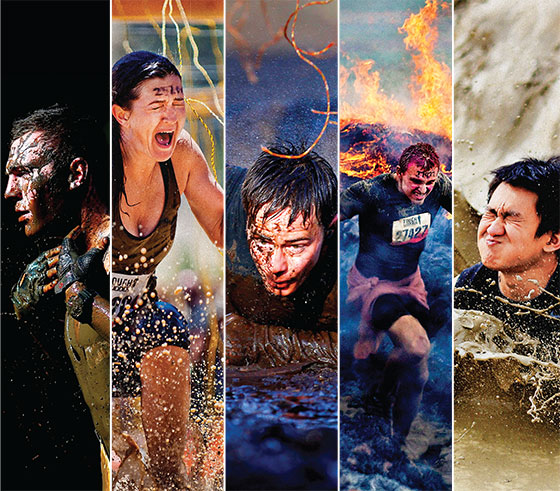
Founded: 2010
Total number of participants: 1.4 million
2012 revenue: $70 million
Lesson: Comfortable, happy young people will spend a lot to be miserable.
If you search #toughmudder on Instagram, you will find nearly 200,000 images—snapshots of amped-up bros doing backflips into a giant mud puddle, grinning pals submerged in ice water, and posters of inspirational messages like “Chicks dig scars.” The obstacle-race industry, which includes Tough Mudder and its competitors Spartan Race and Warrior Dash, has exploded in the past five years. It’s now estimated to be worth some $250 million—and Tough Mudder, founded in 2010 by a Harvard Business School grad named Will Dean, is by far the most successful of the bunch, bringing in some $70 million in 2012. What sets Tough Mudder apart from its competition is the drama of the obstacles. There’s “Electroshock Therapy”—running through a field of live wires carrying as much as 10,000 volts of electricity—and the “Arctic Enema,” essentially a Dumpster full of ice water. Why would 750,000 participants (up from 20,000 in 2010)—mostly young men in their twenties—pay $85-to-$200 entry fees to be abused this way? Maybe it was to be expected that a generation raised on Jackass and reality TV would want their recreational entertainment to feel like a Survivor competition.
Also, the experience is perfect for bragging about on social media, and from the outset Tough Mudder has marketed to the boastful. Those who complete its courses receive highly recognizable bright-orange headbands that can’t be purchased, only earned. “Those were really appealing to that frat-guy mentality,” says Erin Beresini, who’s working on a book about obstacle racing. The races also appeal to companies looking for extreme ways to raise employees’ morale and stoke their competitiveness. As Dean has boasted, “Goldman brings a massive team.”
And, though this is hardly something the company is about to advertise widely, there’s the frisson of actual danger. In April, a 28-year-old participant drowned at a race in West Virginia, the first death in the company’s history. (Marathons have a higher mortality rate, typically one death for every 100,000 participants.) Over that same weekend, a nearby hospital reported two heart attacks, one electric shock, and seventeen other injuries from two days of Tough Mudder races. But none of that has deterred participants, who like to post pictures of themselves next to a Tough Mudder poster reading, “Remember you signed a death waiver.”